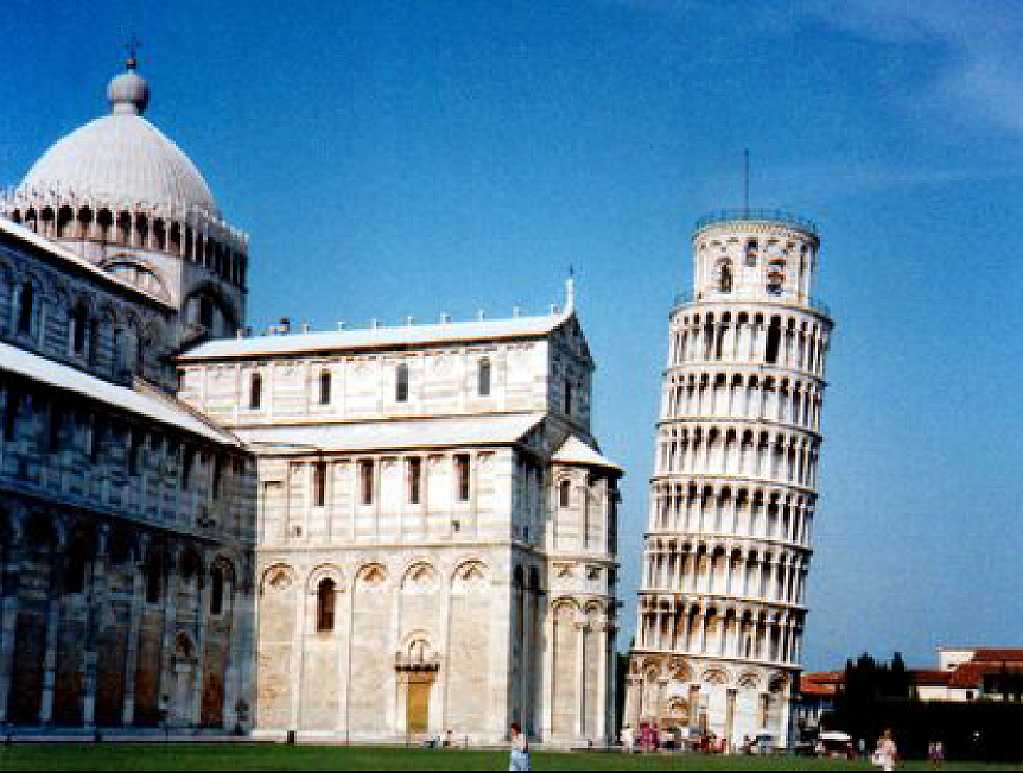The term Renaissance, adopted from the French equivalent of the Italian word rinascita, meaning literally "rebirth," describes the radical and comprehensive changes that took place in European culture during the 15th and 16th centuries, bringing about the demise of the Middle Ages and embodying for the first time the values of the modern world. The consciousness of cultural rebirth was itself a characteristic of the Renaissance. Italian scholars and critics of this period proclaimed that their age had progressed beyond the barbarism of the past and had found its inspiration, and its closest parallel, in the civilizations of ancient Greece and Rome.architecture

Pisa Cathedral (JPEG)Pisa Cathedral (FIF)
[PC:Right Click/ MAC:Command+Click=Zoom In; Command+Option+Click=Zoom Out]
The "rebirth" of art in Italy was connected
with the rediscovery of ancient philosophy, literature, and science and
the evolution of empirical methods of study in these fields. Increased
awareness of classical knowledge created a new resolve to learn by direct
observation and study of the natural world. Consequently, secular
themes became increasingly important to artists, and with the revived interest
in antiquity came a new repertoire of subjects drawn from Greek and Roman
history and mythology. The models provided by ancient buildings and
works of art also inspired the development of new artistic techniques and
the desire to re-create the forms and styles of classical art.
Filippo Brunelleschi, b. 1377, d. Apr. 15, 1446, was one of the earliest and greatest architects of the Florentine Renaissance (see Renaissance art and architecture). The well-educated son of a lawyer, he engaged first in goldsmith work and sculpture but soon turned to architecture. In 1419 he received a major commission for the Ospedale degli Innocenti (Foundling Hospital); in 1421 he began work on the vast dome of Florence's cathedral, left unfinished in the 14th century because of seemingly insoluble structural problems; and in 1421 he began work on the church of San Lorenzo.
These buildings, which took years to complete,
mark the beginning of the Renaissance. The dome of the cathedral
for its technical innovations, the other buildings for their style.
The octagonal dome is 39 m (130 ft) in diameter and 91 m (300 ft) high,
with a 16-m (52-ft) lantern crowning it. By devising new scaffolding and
hoists, by making the dome a self-supporting double shell, and by using
new and lighter masonry, Brunelleschi was able to solve the problems that
had defeated his predecessors. To the astonishment of his contemporaries,
the soaring structure was completed without centering (supporting scaffolding).
San Lorenzo (JPEG) San Lorenzo Basillica (FIF)
[PC: Right Click/ MAC:Command+Click=Zoom In; Command+Option+Click=Zoom Out]
| Richard Grosser
CADRE Systems Architect |
Ph: +643 3890564
Fax:+643 3890569 |
| PO Box 22-095
Christchurch New Zealand |
grosserr@v1.chchp.ac.nz
http://www.chchpoly.ac.nz |
| cadre@ext.canterbury.ac.nz
http://www.geocities.com/ResearchTriangle/Lab/1286 |
|
| https://members.tripod.com/~rgrosser |